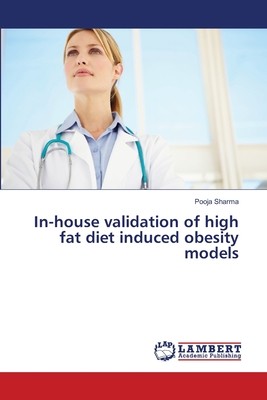
- We will send in 10–14 business days.
- Author: Pooja Sharma
- Publisher: LAP Lambert Academic Publishing
- ISBN-10: 3659333956
- ISBN-13: 9783659333958
- Format: 15.2 x 22.9 x 0.7 cm, minkšti viršeliai
- Language: English
- SAVE -10% with code: EXTRA
In-house validation of high fat diet induced obesity models (e-book) (used book) | bookbook.eu
Reviews
Description
Obesity results from a prolonged imbalance between energy intake and energy expenditure, as depending on basal metabolic rate, heat production, thermogenic effects of the diet & physical activity. Diet-induced obesity in rodents can be achieved by different regimens & approaches. Diets providing a high fat intake have been established as a "gold standard" to generate obese rodent models and have proven to initiate pathologies similar to those in humans. However, this dietary treatment is far from being standardized and its relevance has been criticized. Hence, varieties of high fat diet regimens have been introduced by providing a choice of several palatable food items of variable composition. Further male rats have been considered in developing all types of obesity models and no rationale has been provided as of this discrimination and negligence of using female rats. Another pitfall in the obesity model development is that of the choice of the strain of the rats used for the study. The basis on which strain is being chosen still remains controversial. This present study aimed at comparing & validating different diet induced obesity models utilizing different strains and gender.
EXTRA 10 % discount with code: EXTRA
The promotion ends in 21d.02:06:20
The discount code is valid when purchasing from 10 €. Discounts do not stack.
- Author: Pooja Sharma
- Publisher: LAP Lambert Academic Publishing
- ISBN-10: 3659333956
- ISBN-13: 9783659333958
- Format: 15.2 x 22.9 x 0.7 cm, minkšti viršeliai
- Language: English English
Obesity results from a prolonged imbalance between energy intake and energy expenditure, as depending on basal metabolic rate, heat production, thermogenic effects of the diet & physical activity. Diet-induced obesity in rodents can be achieved by different regimens & approaches. Diets providing a high fat intake have been established as a "gold standard" to generate obese rodent models and have proven to initiate pathologies similar to those in humans. However, this dietary treatment is far from being standardized and its relevance has been criticized. Hence, varieties of high fat diet regimens have been introduced by providing a choice of several palatable food items of variable composition. Further male rats have been considered in developing all types of obesity models and no rationale has been provided as of this discrimination and negligence of using female rats. Another pitfall in the obesity model development is that of the choice of the strain of the rats used for the study. The basis on which strain is being chosen still remains controversial. This present study aimed at comparing & validating different diet induced obesity models utilizing different strains and gender.


Reviews